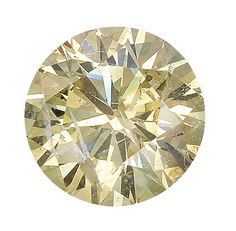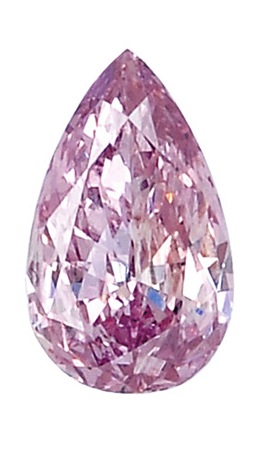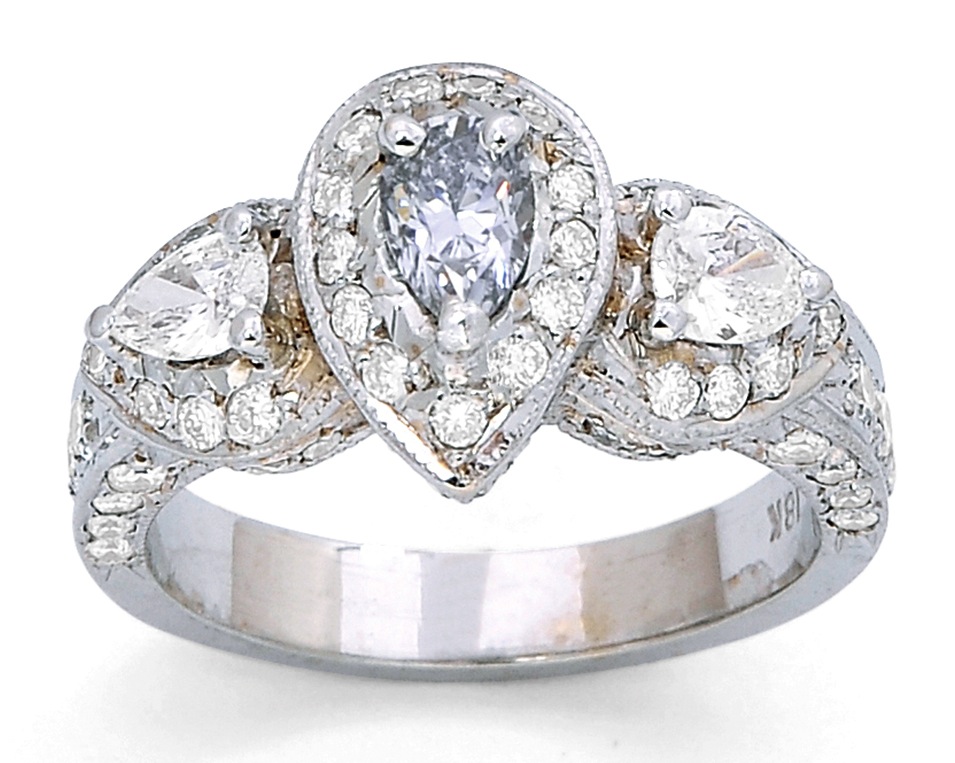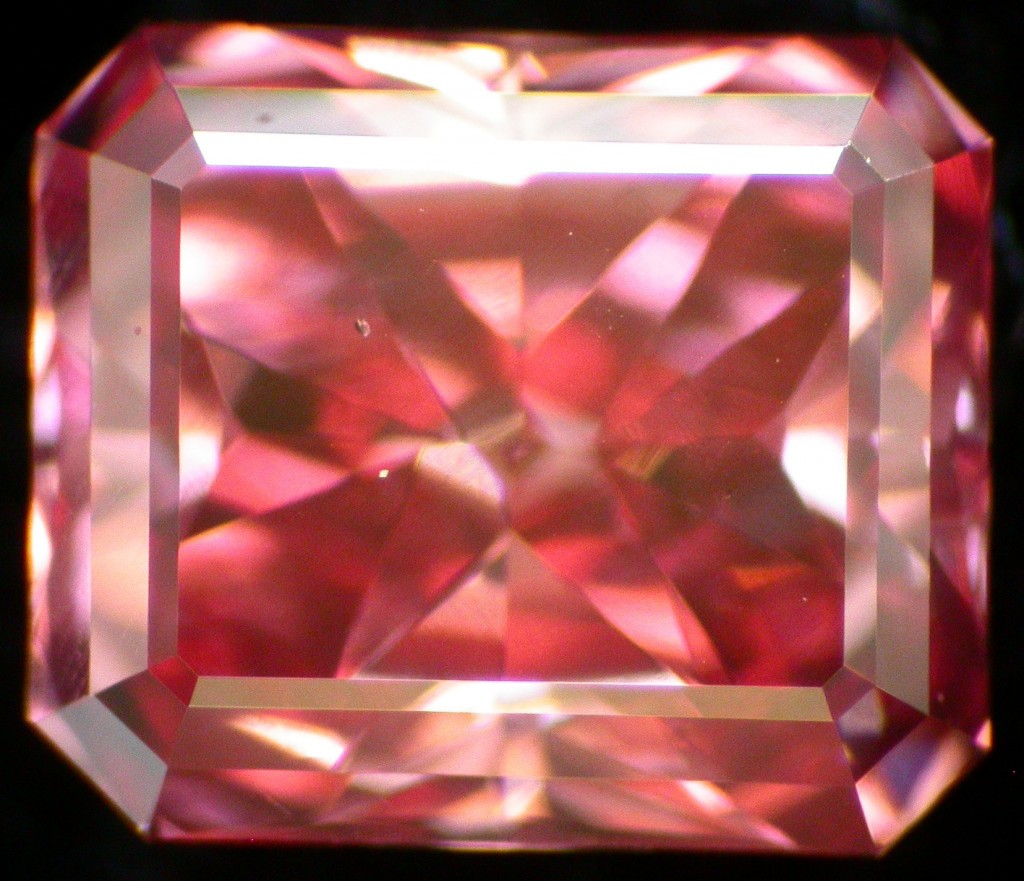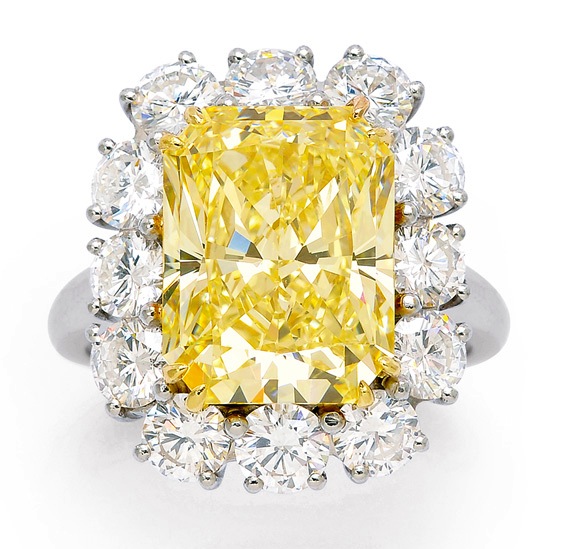
Lot 411: A Coloured Diamond Ring. 6.50 carats, fancy yellow colour, VVS-1 clarity. Offered in the Fall 2014 Dupuis Jewels Auction
We usually think of diamonds as being colourless sparkly beauties that create joy among the recipients. And so they are. However, we also have diamonds that are colourful sparkly beauties, too. Colour is a property of almost all diamonds, but in many cases it is so slight that we have a hard time noticing it.
In some rare cases, there can be enough colour to make diamonds very interesting and attractive. The colours may be anywhere in the spectrum.
What is is that makes a diamond valuable? You know the famous “4 c’s”; carat weight, clarity, cut, and, of course, colour. Colour can have a huge influence on the value. The rarer the colour, the more value it will have, all other things being equal.
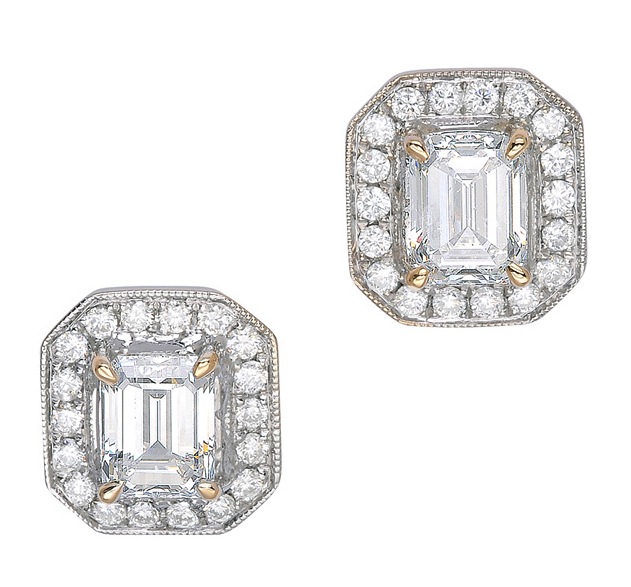
Lot 329: A Pair of Diamond Ear Studs. One centre diamond is “D” colour, the other is “E”. Offered in the Dupuis Fall 2014 Jewels Auction
What is rare colour? Most diamonds have a degree of yellow in them, but in many we don’t really notice it. Diamond colour is graded alphabetically. “D” in diamond is totally colourless, and as we make our way through, we find more tint with each further letter in the alphabet. Only when we reach “Z” do we edge towards a pretty and desirable colour in a diamond.
YELLOW
Diamonds that have yellow colour slightly lighter than “Z” may be called “light fancy”, more intense than “Z” are considered “fancy” yellow diamonds, stronger yellow than “fancy” are called “intense”, and the strongest, brightest yellow is called “vivid”.
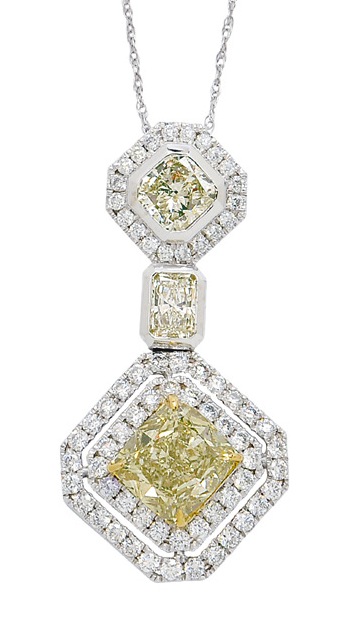
Lot 299: A Coloured diamond Pendant Necklace. Light fancy yellow diamonds. Offered in the Dupuis Fall 2014 Jewels Auction
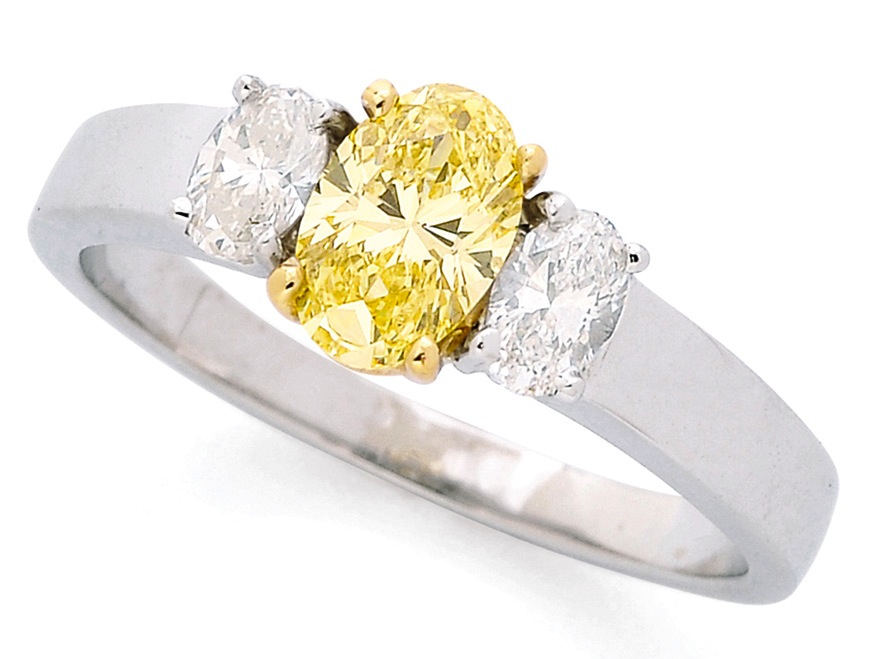
Lot 487: Coloured Diamond and 18K White Gold Ring. Natural fancy yellow. Offered in the Dupuis Fall 2014 Jewels Auction

Lot 365: An Unmounted Coloured Diamond. Fancy intense yellow 3.05 carats, VVS-1 clarity. Offered in the Dupuis Fall 2014 Jewels Auction
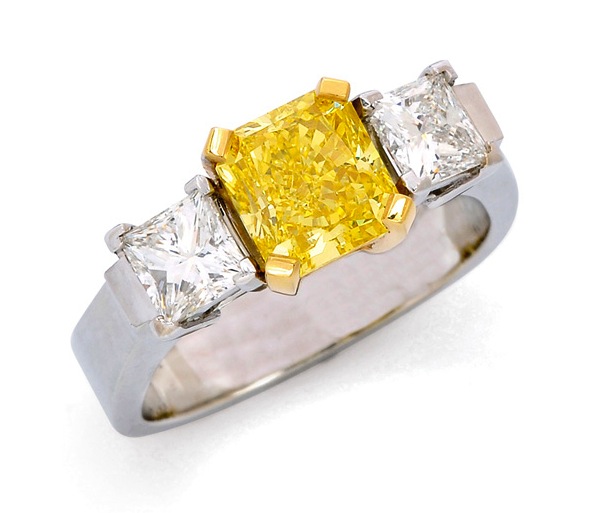
Lot 269: A Coloured Diamond Ring. Fancy Vivid yellow, 2.04 carats, VVS-2 clarity. Offered in the Dupuis Fall 2014 Jewels Auction
THE FULL SPECTRUM
If we go beyond yellow, there is a spectrum of colour available in diamonds, from tiny variations in tint to a whole rainbow.

A range of natural colour diamonds, from faint pink, yellow, blue and brown, through fancy, intense, vivid and deep
The words used to describe yellow colours are also used to describe other colours: Faint, Light Fancy, Fancy, Fancy Intense, Fancy Vivid for increasing colour saturation, plus Fancy Dark, and Fancy Deep for the darker tones.
Historically, diamonds that have noticeable and attractive colour have been known to be rare and highly desirable. The Dresden Green, a 41 carat bright green diamond in the collection in the Green Vault in Dresden is one of the most famous. Probably the most famous coloured diamond in the world is the Hope Diamond at the Smithsonian in Washington, it is a 45.52 carat fancy blue colour.
BROWN
Brown colours, often referred to as “Champagne” diamonds are more available than other colours, due to production at the Argyle mine in Australia. There is good demand for these diamonds, particularly among designers of modern jewellery.
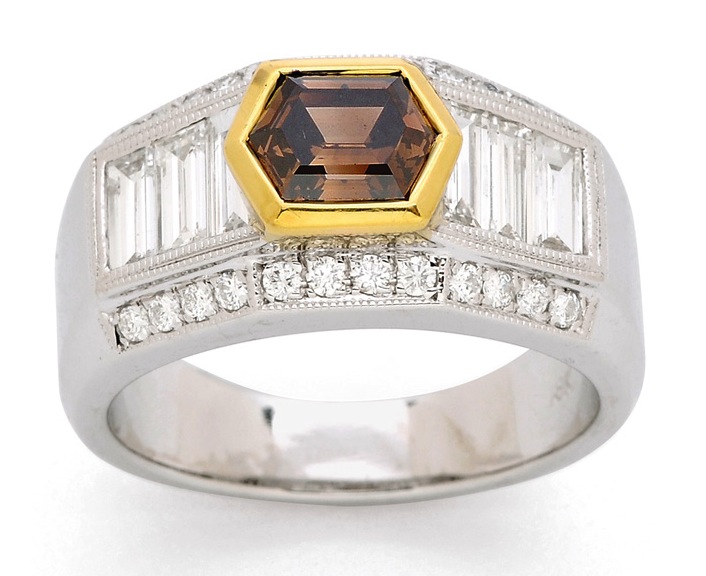
Lot 644: Coloured Diamond and Two-Tone 18K Gold Ring. Brown colour. Offered in the Dupuis Fall 2014 Jewels Auction
CHAMELEON
There are some unusual diamonds that do tricks. They change colour when left in the dark for a few days, and then are exposed to light, or are examined at room temperature and then are gently heated to about 150 degrees C. These unusual and rare diamonds change from a somewhat olive green in light, or at room temperature, to a yellowish brown when kept in the dark, or heated.
PINK
Pink is among the most desirable of colours, and the Argyle mine in Australia is the source of most pink diamonds. Pinks have been in very high demand, and prices have escalated amid speculation about the imminent closure of the Argyle mine. The Victor Mine, in Ontario, Canada has also produced the occasional, very rare pink. Brazil has produced some large pink diamonds.
BLUE
Blue diamonds are extremely rare, and occasionally a bidder will have the opportunity to add one to their collection through auction. Blue is a rare accident of nature, some have originated in India, some in Africa, and some at the Argyle mine in Australia. The Hope diamond would have originated in India.
RED
The rarest of all colours is red. Red diamonds are so rare that most of us will never see one. There are only be a few produced each year. Some red diamonds may sell for over as a million dollars a carat. The Argyle Mine in Australia is the best known source for red.
Auction is the place where we see the majority of important coloured diamonds offered for sale. At Dupuis, each auction sees numerous coloured diamonds available for bidding.
www.dupuis.ca will take you to past and current catalogues.

